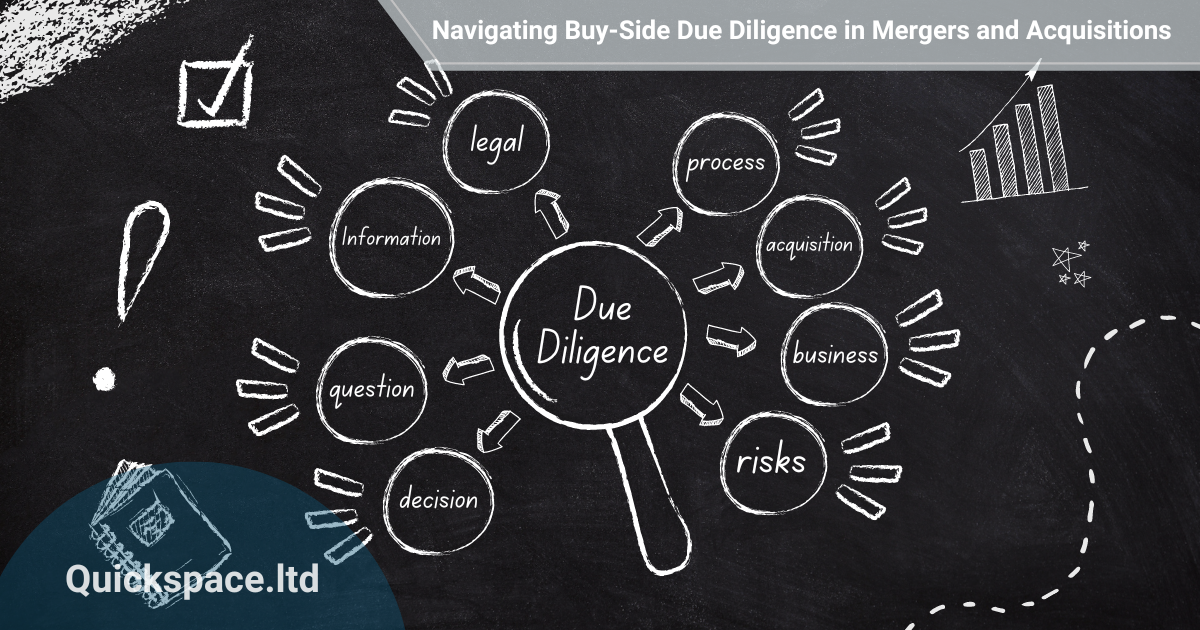
Table of contents
Introduction
In the intricate world of Mergers and Acquisitions (M&A), due diligence is a critical step that can significantly influence the success of a deal. More specifically, buy-side due diligence plays a pivotal role in ensuring a smooth acquisition and subsequent integration process. This article provides a deep dive into buy-side due diligence and its significance in M&A Services.
Understanding Buy-Side Due Diligence
What is Buy-Side Due Diligence?
Buy-side due diligence is the comprehensive review undertaken by the acquirer or buyer to evaluate a potential investment opportunity. It involves the thorough investigation of the target company’s business operations, financial performance, legal obligations, and potential risks.
The Importance of Buy-Side Due Diligence in M&A Services
In the context of corporate acquisitions, buy-side due diligence serves several critical purposes:
- Risk Identification: It helps to uncover potential risks associated with the target business, ranging from financial inconsistencies to unresolved legal issues.
- Value Confirmation: It confirms the value of the investment and validates the financial projections provided by the target company.
- Strategic Fit: It determines the strategic fit of the target company with the acquiring firm’s business strategy.
Key Components of Buy-Side Due Diligence
Buy-Side Due Diligence encompasses several areas. Let’s explore the most critical ones:
Financial Due Diligence
This involves a meticulous examination of the target company’s financial records, performance metrics, and fiscal management practices.
Operational Due Diligence
Operational due diligence assesses the operational efficiency of the target company, including its supply chain management, production capabilities, and technology infrastructure.
Legal Due Diligence
Legal due diligence reviews the target company’s compliance with laws and regulations, intellectual property rights, litigation history, and contractual obligations.
Market Due Diligence
This evaluates the target company’s market position, competitive landscape, and growth prospects. It’s an integral part of the M&A market analysis.
Buy-Side Due Diligence in Different M&A Scenarios
Whether it’s horizontal mergers, vertical mergers, or conglomerate mergers, Buy-Side Due Diligence is paramount. It informs decisions about merger types and acquisition types, the structure of the deal, and the post-merger integration strategy.
Moreover, due diligence plays a crucial role in both friendly acquisitions and hostile takeovers. Even in strategic alliances, joint ventures, or corporate restructuring, understanding the value and potential risks associated with a business transaction is crucial.
The Role of M&A Advisory in Buy-Side Due Diligence
M&A advisory firms, with their expertise in M&A consulting, can provide invaluable assistance during Buy-Side Due Diligence. These professionals can identify potential red flags, perform an unbiased business valuation, and help negotiate deal terms, contributing significantly to a successful M&A transaction.
Conclusion
Buy-Side Due Diligence is not just a protective measure; it’s a strategic process that can reveal opportunities for growth, cost savings, and synergies. By conducting a comprehensive due diligence process, buyers can make informed decisions, mitigate risks, and ensure a successful corporate acquisition.
FAQs
Buy-Side Due Diligence can vary significantly in length, typically ranging from a few weeks to several months, depending on the complexity of the deal and the size of the target company.
While it’s technically possible to proceed without acquisition analysis, it’s highly risky. Without a thorough review of the target company, the buyer may overlook potential risks and liabilities, which could lead to significant financial loss or operational challenges down the line.
In cross-border M&A, Buy-Side Due Diligence is especially crucial because it involves understanding the laws, regulations, and market conditions of a different country. It also includes assessing the implications of cultural differences, foreign exchange risks, and international tax laws.
Absolutely. A comprehensive due diligence process can uncover areas of synergy and opportunities for cost savings, which can be leveraged during the post-merger integration process.
M&A advisory firms provide a wealth of experience and expertise in conducting due diligence. They can assist in the meticulous review of financial records, operational capabilities, legal obligations, and market potential of the target company. Their insights can reveal risks and opportunities that may not be apparent to the acquirer.
Advancements in technology are revolutionizing the due diligence process. Tools leveraging artificial intelligence and machine learning can automate and accelerate data analysis, making the due diligence process more efficient and accurate.
buy-side due diligence, when executed effectively, can be the catalyst that propels a successful merger or acquisition. With its ability to reveal risks and opportunities alike, it remains an invaluable tool in the M&A arsenal.



